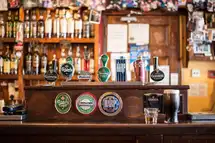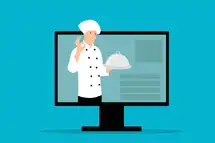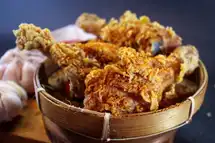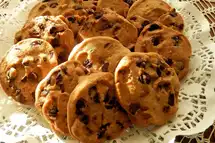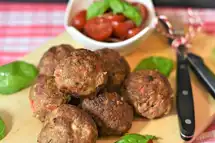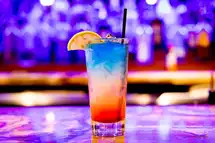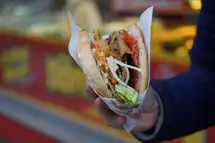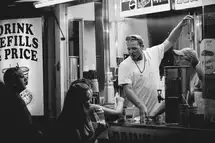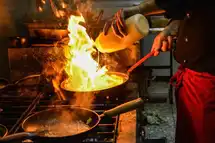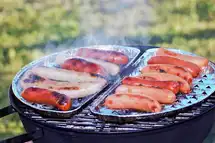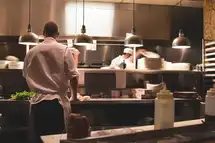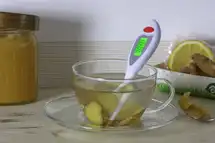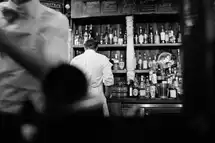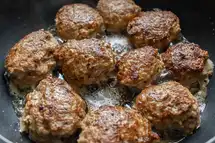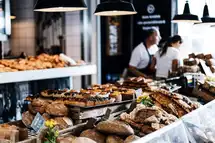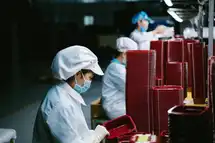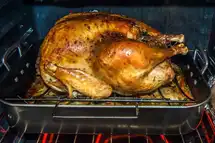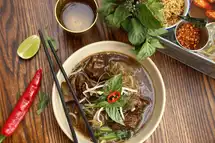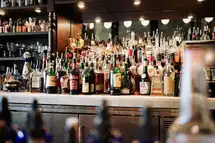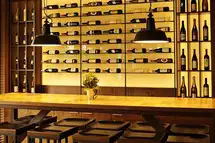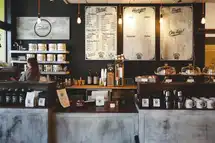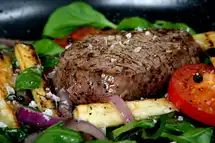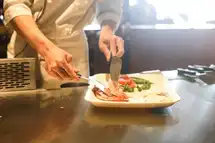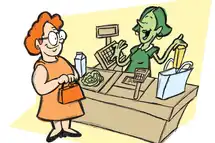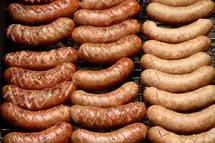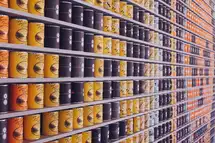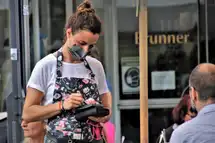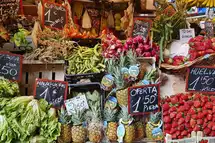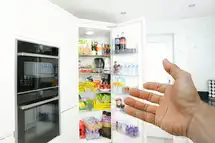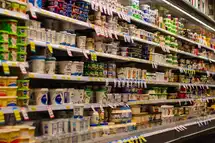What is the food safety temperature danger zone?
The food safety temperature danger zone is the range of temperatures between 40F and 140F in which bacteria can grow rapidly.
Food Safety Temperature Danger Zone- What Temperatures Put Your Food at Risk?
What is Food Safety?
A Deloitte report from 2021 showed that restaurant customers in this Covid era are extremely fastidious about food safety. According to the study, 45% of the respondents were unlikely to revisit a restaurant that had encountered a food safety breach.
Food safety essentially refers to the process of handling, preparing, and storing food in a way that retains nutrients, and prevents infection in the consumer.
Unsafe food contains biological hazards like viruses, bacteria, and parasites; chemical hazards like insecticides, pesticides, food additives, detergents, and so on; and/or physical hazards like human hair, animal fur, bird feathers, pest droppings, dead insects, pieces of metal and glass, packaging material, and so on. Food may also be laced with allergens that could cause allergic reactions when ingested.
Food thus contaminated is risky, and a cause of foodborne illness. According to the Centers for Disease Control and Prevention (CDC), foodborne illness is a significant contributor to the disease caseload in the US, with one in every six people in the country turning out to be a victim of infection caused by consuming unsafe food.
More specifically, over 30 known pathogens and several unspecified agents were found to cause around 50 million cases of foodborne disease in America on a yearly basis. These are essentially cases of diseases acquired domestically. The grim numbers don't end there. Food poisoning also results in nearly 130,000 instances of hospitalization and more than 3,000 cases of death every year.
Food safety can be maintained by following simple steps like maintaining cleanliness, sanitation, and personal hygiene; separating raw and cooked food; and cooking, storing, and reheating food to a safe temperature.
To ensure that food items are safe and fulfill quality standards, a restaurant needs to follow a food safety management system. It must establish a food safety program like the Hazard Analysis Critical Control Point (HACCP) to conform to the requisite regulations and avoid food hazards.
The HACCP program ensures food safety by analyzing and controlling hazards at different stages, starting from food production, procurement of supplies, and managing raw materials, to food preparation, distribution, and its ultimate consumption.
The Food and Agriculture Organization's (FAO) Codex Alimentarius General Principles of Food Hygiene provides a solid framework for food hygiene as well.
A restaurant needs to be mindful of food safety, not just to safeguard public health, but also to avoid the costs and hassles associated with official sanctions and legal wrangling.
Why is Food Safety Important?
No restaurant can ignore the issues of sanitation and food safety. A restaurant's sales figures would be useless without reliable food safety measures, and business would nosedive if the restaurant didn't take proper precautions to prevent food safety breaches, and adopt prompt corrective action if a breach did occur. Negligence on this account would expose the business to litigation, disciplinary action, fines, and even orders to shut down.
The importance of maintaining food safety in view of the disease burden in the US has already been underscored. For those who are aware of the consequences, the names norovirus, salmonella (nontyphoidal), clostridium perfringens, campylobacter spp, staphylococcus aureus, listeria monocytogenes, e. coli, and toxoplasma gondii are sure to cause nightmares. We're not just talking about difficult pronunciation here!
These virulent microorganisms cause the highest number of cases of domestically-acquired foodborne illness that can result in hospitalization and even death.
Common food poisoning symptoms are vomiting, severe diarrhea, stomach cramps, and fever. Young children, patients suffering from impaired immune systems, pregnant women, and the elderly are the most vulnerable. The World Health Organization (WHO) estimates that 125,000 children under five years of age die annually across the world as a result of foodborne illnesses.
Unsafe food means wasted food. The US has one of the highest food wastage rates in the world, with an average American consumer tossing out nearly a pound of food every single day. The US Environmental Protection Agency (EPA) pointed out that in 2018, the country generated food waste amounting to 103 million tonnes. The United States Department of Agriculture (USDA), moreover, has found that 30-40% of the food produced in America simply goes to waste.
One of the biggest sources of food waste in the US is the restaurant sector, which wastes around 30 billion pounds of food annually. According to a Food Waste Reduction Alliance survey from 2014, almost 85% of food that remains unsold in American restaurants is wasted. The annual cost of this wasted food amounts to $162 billion.
Food poisoning is a common illness that is often traced back to food cooking and storing temperatures.
This article will teach you what the food temperature danger zone is and how to avoid it, so that your food is always safe to serve.
What is the Temperature Danger Zone?
Dangerous bacteria and other disease-causing germs in food can be minimized through the meticulous management of food temperature. At low temperatures, pathogens multiply slowly, but their pace of reproduction shoots up at mid-range temperatures. Disease-causing microorganisms, however, can't bear high temperatures.
The USDA cites the temperature range of 40 F to 140 F as the food temperature danger zone. It is this temperature region where there is brisk microbial activity, with bacteria doubling in 20 minutes.
However, according to ServSafe, the National Restaurant Association's Food Safety education and certification program, the temperature danger zone falls between 41 F and 135 F. Within these broad temperature zones, it is the range between 70 F and 125 F where microbial action peaks.
Perishable food items must be stored at proper cold temperatures, or cooked to a safe and adequately high temperature to prevent bacterial growth. Undercooking is particularly harmful as it allows microbes to linger in the food.
A food thermometer, in this regard, is vital to ensure that the right temperatures are maintained while storing, cooking, and reheating food. This is particularly so because the presence of pathogens may not be discernible just by smelling, touching, or looking at the food.
Time and temperature control has to be especially strict for certain items like meat, milk and milk products, poultry, fish, eggs, vegetables, melons, plant-based meat alternatives, cooked rice, and so on, which are highly prone to attack by pathogens.
Ideal Holding Temperatures for Different Foods
Temperature control while storing food items involves either cold holding or hot holding. Cold food items like ice-cream, salads, cucumber soup, and sushi, for example, need to be maintained at temperatures below the danger zone. On the other hand, hot holding is essentially the process by which cooked food is kept hot prior to or at the time of serving. Hot food items are maintained above the food temperature danger zone.
Be quick to transfer food items to a refrigerator when you know you won't be consuming them soon.
In order to cold hold food, refrigerate it at 40 F or lower. Freezer temperatures need to be zero degree Fahrenheit or lower. Consume food items no later than six hours after taking them out of the refrigerator.
The temperature of both, cold-and hot-held food needs to be monitored every two hours. Even if you had left your meal in the food temperature danger zone, it is possible to arrest the growth of microorganisms by simply re-chilling it. However, you would have no option but to discard cold food if its temperature climbed to 70 F or higher.
On the other hand, food should be hot held at a temperature of 135 F and above. But to be on the safe side follow the USDA recommendation, which prescribes a wider temperature danger zone.
Hot holding in accordance with USDA's definition of the temperature danger zone requires hot food to be stored at 140 F and above. Food needs to be stirred regularly to make sure that the heat is evenly distributed. Keep food that is freshly cooked separate from hot- or cold-held food. Hot food lying for over four hours below 140 F will have to be discarded.
While cooking, check the internal temperature of the food regularly with a food thermometer. Use chafing dishes, warming trays, and slow cookers in order to serve or keep your food warm. Some warmers are able to hold food only at temperatures of 110-120 F, and are inadequate for hot holding. Only select equipment that can keep food safe by storing it at 140 F and higher.
If unused for more than two hours, platters containing cold food need to be kept on ice so that the food temperature doesn't climb beyond control. Perishable food items lying at room temperature for over two hours won't be safe to consume.
On the other hand, food handled at places that witness temperatures above 90 F, can't be safely held beyond an hour. Leftovers should be refrigerated within two hours. Cooked leftovers must be used within four days.
Ideal Cooking Temperatures for Different Foods
Meals need to be cooked to safe internal temperatures to ensure food safety and Disease Control . Detailed temperature charts provided by the US Food and Drug Administration (FDA), and Food Safety and Inspection Service (FSIS) contain recommendations for safe internal cooking temperatures and rest periods for different types of food.
No matter how hard you try, at times you just can't avoid keeping food out of the temperature danger zone.
Let's now look at a consolidated list of food products and their safe minimum internal cooking temperatures, and the recommended rest periods.
Beef, pork, veal, and lamb in the form of steaks, chops, and roasts need to hit a minimum internal temperature of 145 F. A rest period of at least three minutes has to be allowed before they are consumed. Rest time, in this regard, refers to the duration that a food product stays at the final temperature after being taken off a heat source. This is necessary to kill harmful bacteria.
Notably, the safe internal temperature recommended earlier for whole pork cuts was 160 F. No rest time was required. A USDA amendment now stipulates that the pork ought to be tender and juicy, in addition to being safe to consume. By using the same yardsticks for pork as those for other types of cooked meat produced in federally-supervised establishments, the USDA advisory helps consumers remember them easily.
Finfish must also be cooked to 145 F to render it safe for consumption. Alternatively, it can be cooked till the flesh turns opaque and it can be separated easily with the help of a fork. Uncooked ham, which is, fresh or smoked also demands a minimum internal cooking temperature of 145 F, with three minutes of rest time.
In the case of ham that is fully cooked and packaged in USDA-inspected establishments, the FSIS calls for reheating it to 140 F. Ham repackaged at external plants and leftover spiral-sliced hams need to be reheated to 165 F.
Ground meat and egg dishes are to be cooked to a temperature of 160 F, and eggs have to be cooked till the yolk and white become firm.
Poultry products (whole bird, thighs, breasts, ground poultry, legs, wings, giblets, and stuffing) require an internal temperature of 165 F. So does turkey. Leftovers and casseroles are to be cooked to 165 F as well.
In the case of shrimps, lobsters, and crabs, cook until the flesh becomes pearly and opaque. Scallops are to be similarly cooked. Ensure that mussels, oysters, and clams are cooked till their shells begin to open up.
There are so many factors that can affect food safety, like the type of food, cooking temperature, and how long it’s been stored.
This guide will teach you what the food temperature danger zone is and how to avoid it.
Ideal Reheating Temperatures for Different Foods
Reheating is the process of raising the internal temperature of leftovers by microwaving them or putting them on another source of heat. This helps eliminate dangerous bacteria, making the food safe for consumption.
Reheated food should touch an internal temperature of 165 F and stay at that temperature for two minutes at a minimum, so that all pathogens are destroyed. Equipment used for hot holding should, however, not be used for reheating. Food should be stirred while reheating so that the heat distributes uniformly through the food.
The Food Standards Agency advises food to be reheated only once. Repeated reheating may lower the nutritional value and natural flavors of the food.
In the case of cooked and cooled food items that are at a high risk of microbial attack and are to be hot held, reheating should ensure that all parts of the food reach 165 F for 15 seconds. These food items must be reheated within two hours after they are taken out of the refrigerator. Food should be stirred, and then allowed to remain covered for a duration of two minutes after it is reheated.
Cooked and refrigerated food that has been prepared fully for instant service can be served at any temperature and won't need reheating. Cooked food from a commercial food processing establishment needs to be reheated to 135 F (or 140 F depending on which temperature danger zone definition you opt for) before being hot held. Rice and other grains, legumes, vegetables, and fruits need to be cooked past the upper limit of the temperature danger zone and don't have minimum cooking temperature requirements, as such.
Moreover, the thawing of food should never be done at room temperature. It's best to thaw food in the refrigerator itself, where it's kept chilled at 40-41F or even lower. Food can also be thawed in microwave ovens, in cold water, or even during cooking. After thawing food under cold water or in a microwave, however, it should be quickly cooked.
Avoid refreezing raw proteins like meat, seafood, and poultry; juice concentrates; combination dishes like casseroles, pot pies, and pasta; ice-cream; and cooked proteins.
How to Protect Your Food From The Danger Zone
Thermometers offer the most sure-shot way to prevent food items from straying into the temperature danger zone. They prevent over-and undercooking and help food items stay flavorful.
Food thermometers are of different types. You have oven-proof dial thermometers, digital thermometers, Wifi thermometers, and Bluetooth thermometers.
Some Bluetooth applications let users select meat varieties from a menu of preset alternatives. The users can also select the temperature range for cooking. The person grilling or smoking meat must be able to determine the food item's internal temperature as well as the ambient temperature of the oven, at a glance. Bluetooth thermometers allow cooks to monitor food temperatures on their mobiles from a distance. Apps linked to Bluetooth thermometers alert them when the food is ready.
You may use appliance thermometers to gauge the temperature of the air inside the oven, freezer, and refrigerator. Place the thermometer in a glass of water at the center of the refrigerator. If the refrigerator temperature is outside the 38-40 F range, the temperature control needs to be adjusted. You also need to ensure that the freezer temperature stays within 0-2 F.
Food safety and food temperature control can be accomplished with the help of advanced software. The Zip HACCP solution, which can be downloaded from the Hubworks app store, lets food businesses monitor critical tasks related to food safety in real time. It also helps to make sure that employees stick to standard operating procedures.
Updates can be synced across various devices, and business owners can track operations at their establishment and ask for corrective steps, no matter where in the world they are at the moment. The app also generates reports that facilitate decision-making.
The Blue2 temperature monitor that works on Bluetooth technology provides additional help by seeing to it that meals are neither overcooked nor undercooked, and don't contain pathogens. This temperature monitor can be easily integrated with the Zip HACCP solution.
Regularly monitoring and carefully measuring food temperature ensure that the risks associated with foodborne illnesses are minimized.
Restaurants can track the temperature of their storage facilities in real time with another app called Zip Temperature. This software alerts businesses about temperature violations in equipment. Zip Temperature is also available on Hubworks.
Food poisoning is one of the common causes of food-borne illnesses.
Making sure food doesn’t enter the food temperature danger zone is one of the ways to keep it safe. This article tells you how to achieve this.


